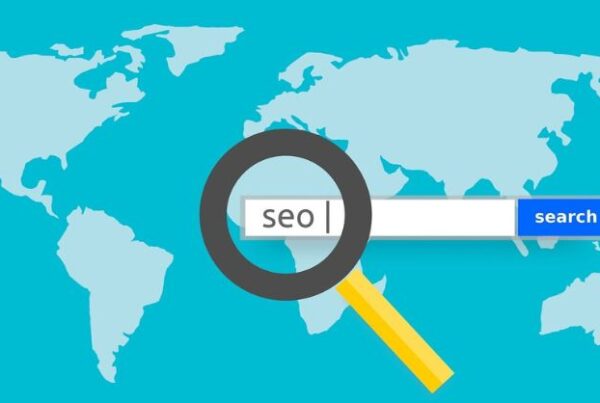 SEO vs Social Media: When to Search and When to Scroll
SEO vs Social Media: When to Search and When to Scroll
Small business owners are frequently faced with the question:
What is the best method to drive traffic to my website?
Whether they have the goal of building brand awareness or making sales, the answer they reach tends to be either investing in SEO or in social media.
My question is?
Why do we have to choose SEO vs. social media?
Are there some businesses where it would make sense to choose one over the other? Or does it make sense to develop a comprehensive digital marketing strategy that combines the two?
In this article, we’ll take a deep-dive into the discussion between SEO vs social media for driving website traffic. After examining how each is instrumental for achieving business goals, we’ll review the essential components of an effective digital marketing strategy.
How Does SEO Drive Traffic?
Let’s start by exploring the various ways that SEO helps to build brand awareness by directing traffic to a business’s website.
First, it’s important to remember that when referring to SEO, we are talking about the organic rankings of search engine results. Paid search engine results (PPC) will be discussed later.
Developing the SEO of a website is crucial to encouraging traffic. Not only does it increase site visits, but it draws the attention of people browsing who are actively interested in making a sale.
A recent study suggested that 90% of people haven’t decided on which brand to choose before searching for their purchase.
This forms a large pool of highly-motivated customers that a business can appear in front of.
Accordingly, investing in SEO makes a business’s website more visible, thus increasing brand awareness. By making a website visible to those most likely to make a purchase, we can conclude that SEO has a far-reaching impact on sales.
Another key benefit of focusing on SEO is its use of keywords to tailor website content to popular and relevant searches. It is possible to research the most popular search terms that relate to a business’s products. These can then be incorporated into blog posts and meta descriptions.
Keyword research might go so far as directing future product creation according to the latest market search volumes.
Finally, we should not neglect a secondary result of effective SEO, alongside website traffic. This is the fact that businesses will actually provide the answers that browsers are looking for. Their websites will become a helpful tool that visitors are likely to share, which brings us to… social media.
How Does Social Media Drive Traffic?
Next, let’s turn to how social media has a significant impact on directing traffic to business’s websites. Social media marketing is a beneficial component for many businesses’ digital marketing strategies. It can play a key role in increasing brand awareness.
As with search engine results, social media marketing can be divided into organic and paid. Each of these plays an important role in introducing brands to new users. Both encourage these users to become potential customers.
It is worth investing in social media content because of the influence of peer approval. By regularly posting informative or appealing content, this will be liked, retweeted, or commented on by social media users. The online connections of these users then become aware of the brand through the lens of peer approval.
This is how organic social media marketing builds brand awareness. It has the added bonus of being free to publish from a business’ channel on the platform. Now, let’s look at how the other side of this coin – paid social media advertising – drives website traffic.
Let’s take Facebook as an example. Social media marketing exploits the enormous wealth of data Facebook has about its users. Implementing a lookalike audience campaign allows businesses to target their ads specifically to users who exhibit similar traits to their existing customers.
While social media has deserved its place in any discussion on driving website traffic, our team at VujaDay would concede the slight edge to SEO. By appearing in search results, businesses can guarantee that these individuals are actively looking to become informed on a topic, if not buy a product.
So, social media marketing plays an important role in the marketing funnel. But as we’ll explore now, businesses should examine their goals when allocating their marketing budget.
Achieving Marketing Objectives
Any business owner contemplating their digital presence and how to make the most of their budget needs to start with their OKRs. What are the priorities this quarter? And is there a specific stage of the marketing funnel that needs to be addressed?
Answers to these questions can unveil the best use of a marketing budget. Both SEO and social media strategies increase brand awareness, albeit in different ways. Shunning either of these will result in fewer website visits for the vast majority of businesses.
Yet, SEO assists in every stage of the customer’s journey, from brand discovery, to completing a sale. At the brand awareness stage, a website with a strong SEO will provide answers to the queries that an individual searches for.
Next, when potential customers are actively looking for a business to meet their needs, SEO strategies assist via external links on third-party websites. Metadata that captures long-tail keyword search terms is also beneficial.
Lastly, video testimonials, case studies, and reviews are significant. They can all boost a business’s SEO while converting potential customers into actual customers. Thus, while social media marketing is a useful tool for brand awareness, SEO strategies drive traffic throughout the consumer journey. This includes those who are particularly motivated to make a purchase.
A Complimentary Strategy
Small and medium business owners sometimes have a tendency to turn questions about digital marketing strategies into false dichotomies. Thus, while SEO and social media have diverse methods of driving traffic to websites, our expert team at VujaDay would argue using both forms the most effective brand awareness strategy.
By dismissing the search vs social argument, and instead incorporating both, businesses can profit from the ways in which these two channels cultivate a symbiotic relationship.
First, having a strong social media presence imports validation to a brand. So, if a business has been discovered via organic search results, and the potential customer wants to double-check their reputation, an up-to-date and interactive social media presence would achieve this.
Next, the keyword research unearthed by SEO campaigns can be utilized across social media platforms. The insights provided into popular search terms and the current state of the market can guide which hashtags should be used. They can also inform which terms to include in a bio, and which issues or products to draw attention to in posts.
Don’t forget that alongside these ways in which SEO and social media strategies benefit each other, there is also the ‘eggs in one basket’ metaphor. What happens if a business’s Facebook page is taken down, or their Google traffic drops off? Websites boasting many sources of traffic are in the safest position.
Don’t Forget About SEM
Finally, this guide to driving website traffic has focussed on SEO vs social media. But, there is another element that cannot be overlooked. Search engine marketing (also known as search engine advertising or SEM) is another way to ensure potential customers are heading to the website of a certain business, rather than to their competitors.
The biggest player in the SEM industry is Google Ads. Implementing a Google Ads strategy should be considered in many scenarios. Particularly, for industries that are heavily saturated with competitors. These businesses might stand little chance of ranking on the first page of search results. Realistically, their competitors are much bigger players and will outrank smaller setups.
Paid search engine advertising thus becomes their best friend.
The paid results appear above organic results and will thus attract many browsers. Businesses can bid on specific keywords that correspond to their products, location, or niche within the market. What’s more, the ad content can be customized for each ad group, or can highlight a current promotion or product the business is pushing.
It’s also important to remember that SEM operates on a pay-per-click basis. This means that businesses only pay for customers who have visited their website, so ad spend is linked directly to website traffic.
SEM enhances a digital marketing campaign focussed on SEO. It ensures a business’s presence in search results via both paid and organic listings.
Making the Decision: SEO vs Social Media
We’ve now considered SEO vs social media in relation to building brand awareness. When it comes to driving potential customers who are ready to buy a product or service, search engine optimization has the edge. Even so, social media marketing plays a crucial role in the earlier stages of the marketing funnel, and cannot be overlooked.
It’s clear that businesses cannot simply choose one over the other. The vast majority of companies need both pillars to ensure a wide range of traffic sources. The best campaigns will also incorporate SEM.
For further details about how VujaDay can help your business construct a comprehensive and successful digital marketing campaign, contact us here.

 SEO vs Social Media: When to Search and When to Scroll
SEO vs Social Media: When to Search and When to Scroll


One Comment